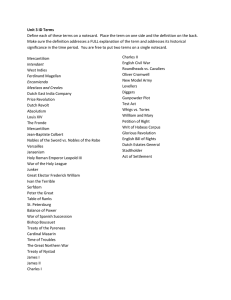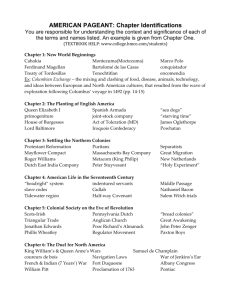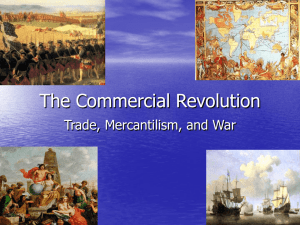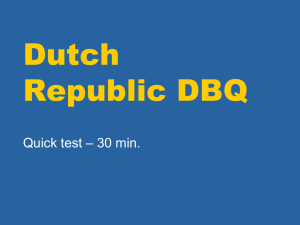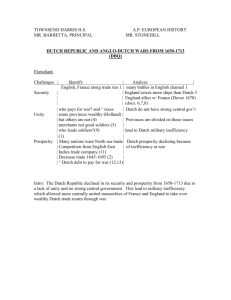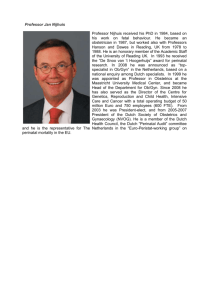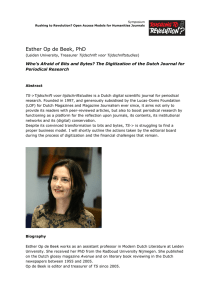Module 1.3 reading guide 2
advertisement
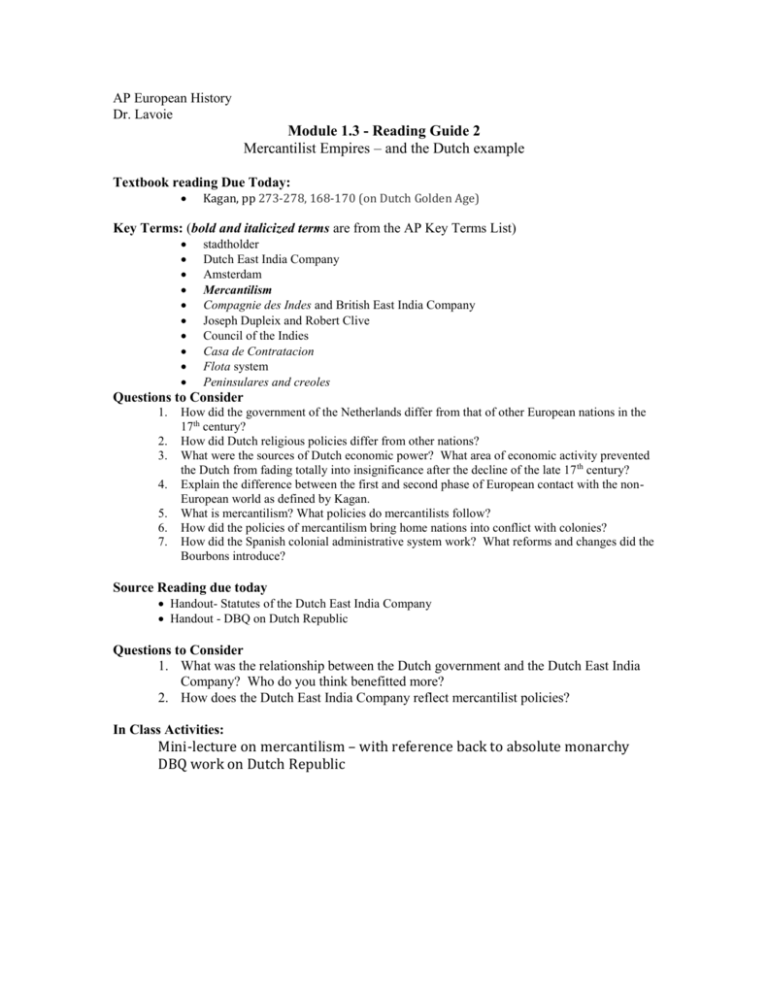
AP European History Dr. Lavoie Module 1.3 - Reading Guide 2 Mercantilist Empires – and the Dutch example Textbook reading Due Today: Kagan, pp 273-278, 168-170 (on Dutch Golden Age) Key Terms: (bold and italicized terms are from the AP Key Terms List) stadtholder Dutch East India Company Amsterdam Mercantilism Compagnie des Indes and British East India Company Joseph Dupleix and Robert Clive Council of the Indies Casa de Contratacion Flota system Peninsulares and creoles Questions to Consider 1. 2. 3. 4. 5. 6. 7. How did the government of the Netherlands differ from that of other European nations in the 17th century? How did Dutch religious policies differ from other nations? What were the sources of Dutch economic power? What area of economic activity prevented the Dutch from fading totally into insignificance after the decline of the late 17 th century? Explain the difference between the first and second phase of European contact with the nonEuropean world as defined by Kagan. What is mercantilism? What policies do mercantilists follow? How did the policies of mercantilism bring home nations into conflict with colonies? How did the Spanish colonial administrative system work? What reforms and changes did the Bourbons introduce? Source Reading due today Handout- Statutes of the Dutch East India Company Handout - DBQ on Dutch Republic Questions to Consider 1. What was the relationship between the Dutch government and the Dutch East India Company? Who do you think benefitted more? 2. How does the Dutch East India Company reflect mercantilist policies? In Class Activities: Mini-lecture on mercantilism – with reference back to absolute monarchy DBQ work on Dutch Republic
